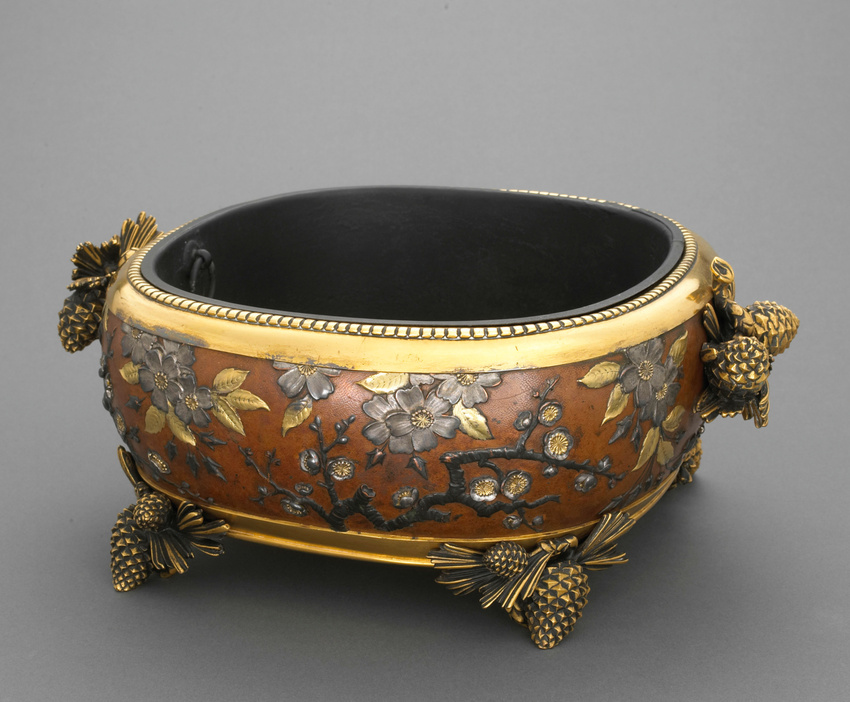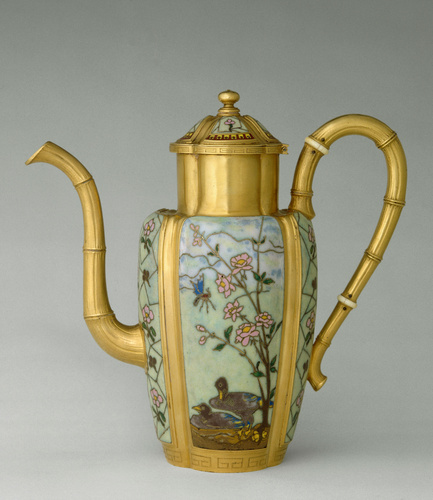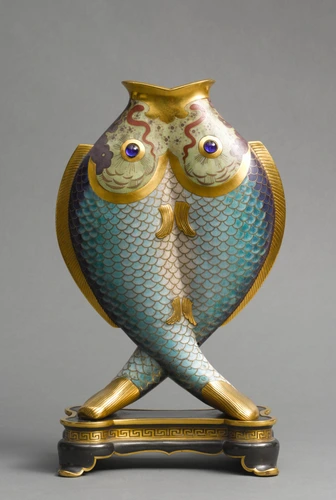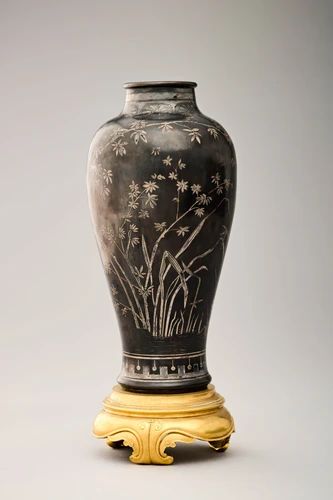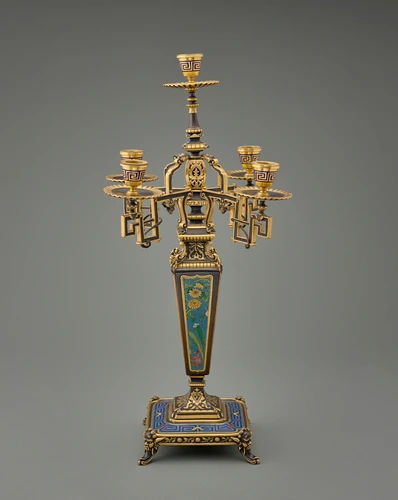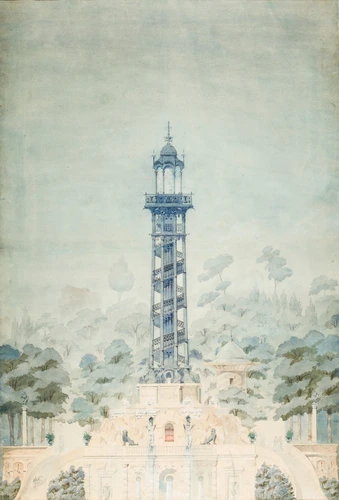Jardinière
Not content with securing the various services of well-known artists, Christofle & Co, the leading French manufacturer of gold and silverware in the second half of the 19th century, engaged the architect and theoretician Emile Reiber. Appointed head of the design studio in 1865, he enabled the firm to develop, in the 1870s, in addition to its usual production of tableware, an inspired series of quite extraordinary Japanese style pieces. Christofle thus became an expert producer of polychromatic bronzes.
After having hesitated "for a while, trying out the Indian palm, the Persian carnation, the Egyptian lotus and the Chinese peony" (Burty, Ancient and modern cloisonné enamels, 1868), Reiber showed himself to be one of the most avid enthusiasts of Japanism. For the coloured models he designed for Christofle, he used decorations and techniques from the Far East, reviving tableware and table furniture.
The discovery of Japanese (and Chinese) bronzes was the inspiration for these attempts, which, by using progressive industrial techniques, came to equal the alloys and encrustations produced in Japan. Experiments into polychromy led to a whole collection of decorative pieces, which attracted a lot of attention at the Universal Exhibitions in Vienna in 1873 and in Paris in 1878. This jardinière, decorated with prunus blossom– the same series also includes candelabras, gas lamps, fruit bowls and fruit dishes – demonstrates the success of these "bronzes encrusted with polychrome reliefs", produced in different colours, on a black or red background.
